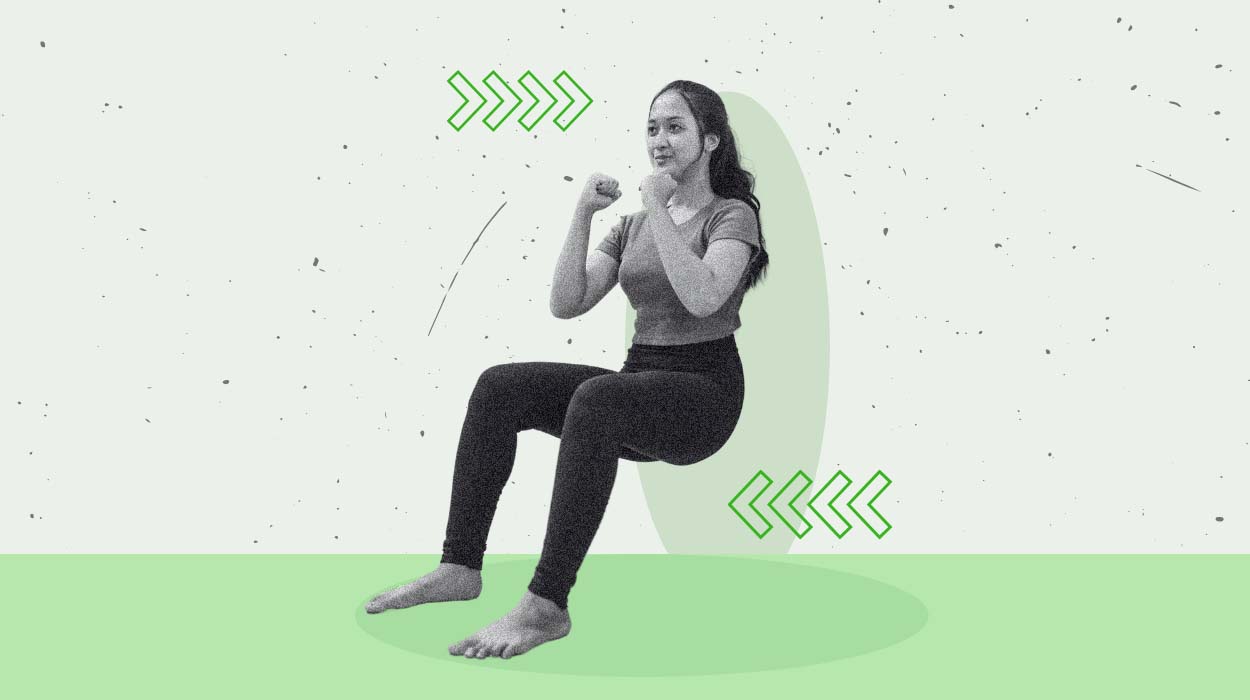
Maybe you remember the wall sit as a painful chore from grade school gym class. It might surprise you to know that it is, in fact, there are certain wall sits’ benefits that are impressive lower body and core exercises that can be completed in minutes a day by people of all activity levels.
Wall Sit Benefits
- Works your entire lower body.
- Burns a lot of calories.
- Increases your endurance.
- Lots of variations.
- An alternative to squats.
- Improves focus.
- Improves core strength.
- Great for skiers and boarders.
- Can be done anywhere.
- Fun to do.
10 Wall Sits Benefits
Works Your Entire Lower Body
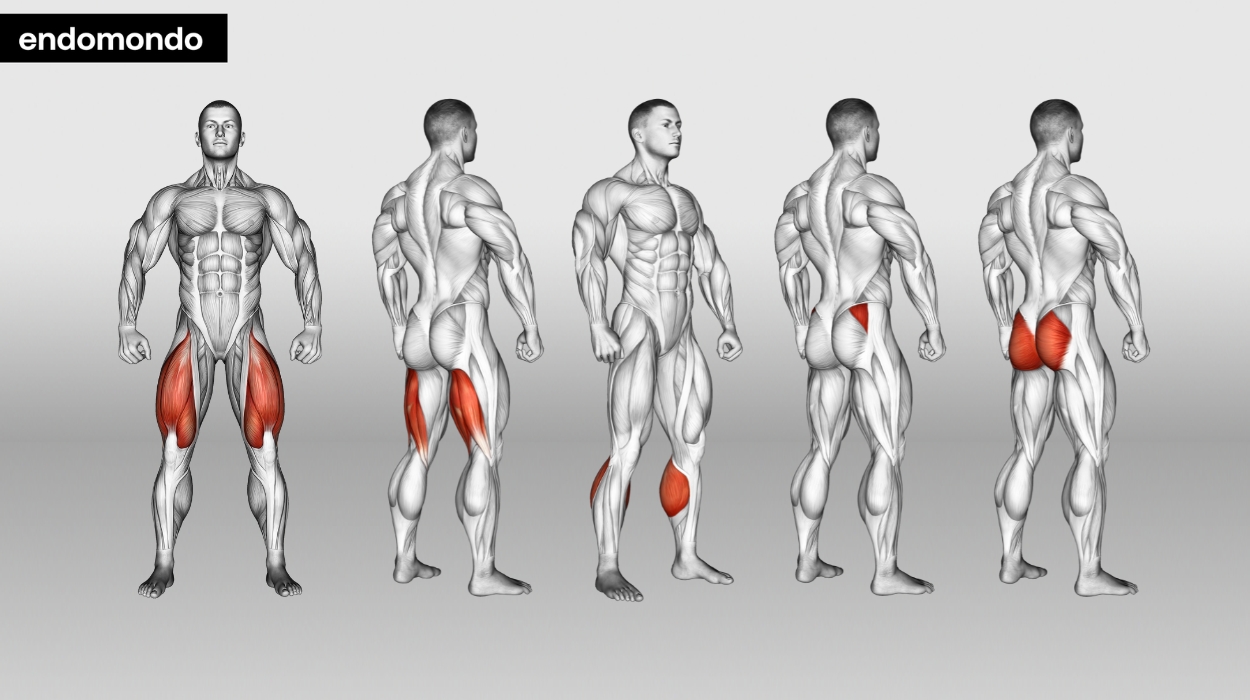
Wall sits activate all the major muscle groups in your lower body. The quadriceps, hamstrings, calves, and glutes work hard during a wall sit.
Burns A Lot Of Calories
Depending on how much you weigh, you can burn approximately four to eight calories per minute doing a wall sit. The more you weigh and the longer you hold it, you can burn a significant amount of calories. If you weigh 155 pounds and can hold a wall sit for 10 minutes a day, you’ll burn approximately an extra 400 calories a week.
If you want to burn even more calories, you can give weighted wall sits a try. Hold hand weights or wear a backpack to intensify your calorie burn.
Wall sits aren’t just a strength-building exercise. They also increase[1] heart rate significantly in a short amount of time. Depending on the intensity you choose, within two minutes you could experience aerobic heart rates. This leads to a temporary increase in metabolism during and after the exercise, and you’ll burn more calories, even while at rest.
Increases Your Endurance
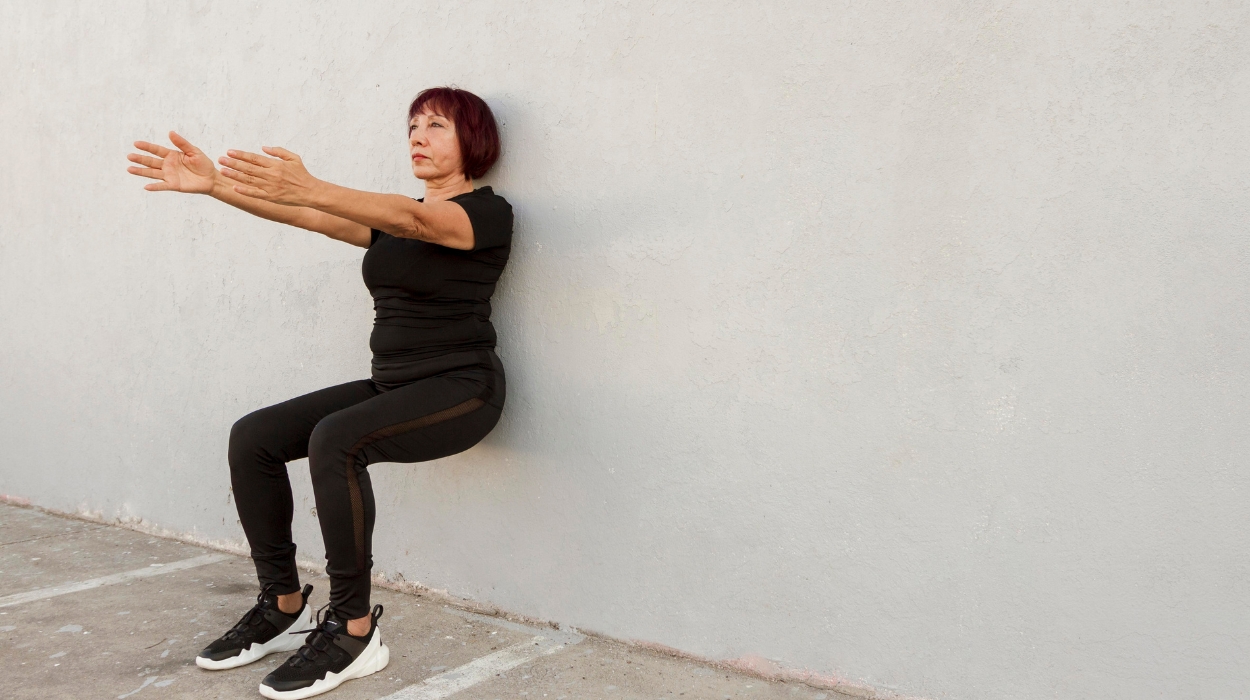
Wall sits increase not only your muscle mass strength but also your muscular endurance. They are an isometric exercise,[2] meaning the joints don’t move and the muscles tighten and don’t lengthen during the exercise.
Muscle endurance is the measure of how long you can maintain a contraction in your muscles. Obviously, challenging your leg muscles with daily contracted holds will help improve muscle endurance.
Lots Of Variations
You can keep it basic or get fancy with your wall sits. You can add weights for extra heft and calorie burning. You can also incorporate free weights to do bicep curls, shoulder presses, and lateral raises while you hold your wall sit.
Make it extra challenging by using only one leg or slowly alternating legs. Raise and lower your heels to intensify your calf workout. Lift your toes for an extra burn. You can also put a med ball between your knees to give your adductors some extra work.
An Alternative To Squats
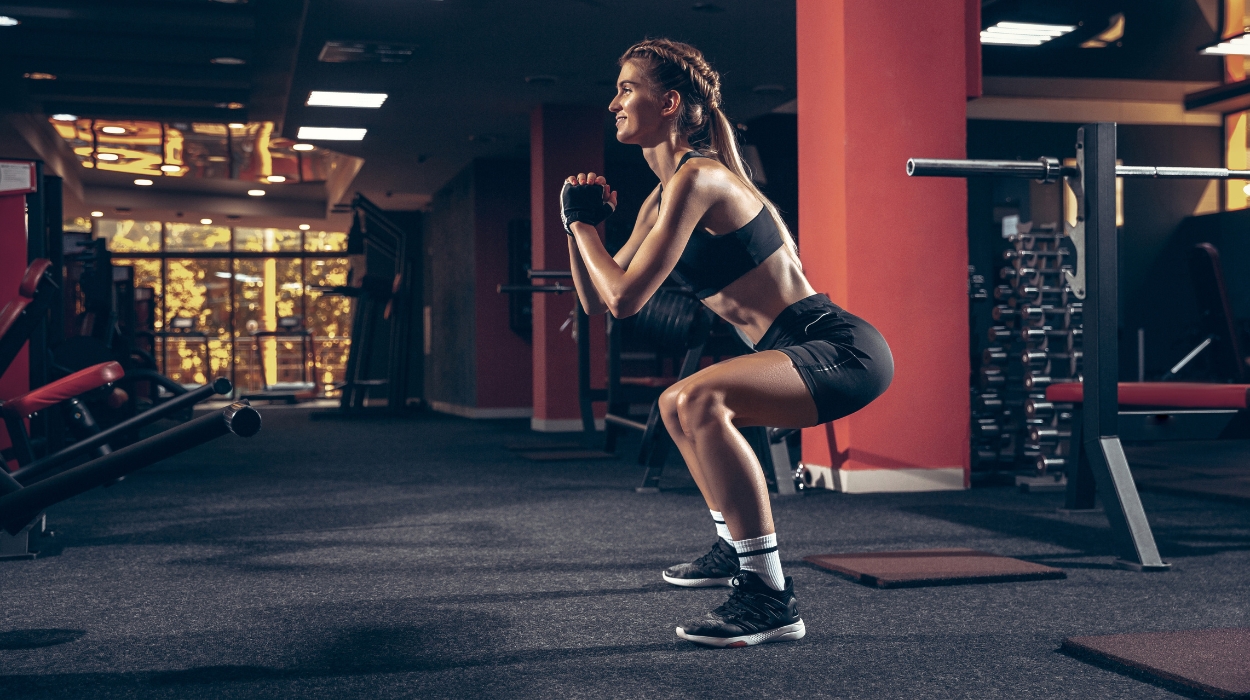
Wall sits are an amazing alternative for people who can’t yet do squats due to muscle weakness or mobility issues. Wall sits are a joint-friendly exercise for building knee stability and can help you gain the strength and balance you need to perform a squat position.
Once you feel ready for a new challenge in your journey toward squats, you can try stability ball-wall squats. Put a large stability ball between your back and the wall. Slowly stand up from your wall sit position, rolling the ball up your back, and then return to your starting wall sit position. This will help you develop excellent squat form while strengthening your core and legs.
You can also stop and do isometric holds as you roll up and down the ball, challenging your muscles from many angles. The more knee stability and muscle strength you build, the healthier your knees will be. People with knee pain will be delighted as they notice less pain and improved mobility over time.
Improves Focus
Wall sits can be, for lack of a better word, painful. They are simple but can be intense. Concentrating on holding your leg and abdominal tension in excellent form while feeling intense physical sensations helps you to build focus and mental fortitude. Luckily, you can reap many benefits in little time.
Improves Core Strength
Although most of the effort needed for wall sits comes from your leg muscles, in order to hold yourself in the perfect form you will need to engage your abdominals for the duration of the exercise.
If you add a band around your knees, you will engage your abductors and put an extra burden on your obliques and transverse abdominal muscles. Strengthening these muscles improves lumbar[3] (lower back) stability as well as core strength.
Great For Skiers And Boarders
Wall sits emulate the posture skiers and boarders use in their sports. Therefore, they are a perfect choice for strengthening and stabilizing the specific muscles and joints needed for those activities.
Can Be Done Anywhere
You don’t need any equipment to do wall sits; you only need as much space as you can fit into. You can do it at home, in a hotel, at work, or at the gym.
Fun To Do
Wall sits painfully. How on earth could they be fun? If you enjoy personal challenges and reaching goals, then wall sits can definitely be fun.
There are so many variations to the exercise that you never need to be bored with it, and you can set mini-goals and reach them in short amounts of time.
The best part is that with consistent practice you will start seeing improvements in your strength and stability. Feeling strong and healthy in your body is pretty darn fun.
What Is A Wall Sit?
A wall sit, also known as a wall squat, is a misleadingly simple exercise with complex benefits. To do a wall sit,[3] press your back against a flat wall while keeping your knees bent at a 90-degree angle and thighs parallel to the floor. Keep your feet shoulder-width apart and flat on the floor. Simple, right?
How To Do Wall Sit Exercise (With Perfect Technique)?
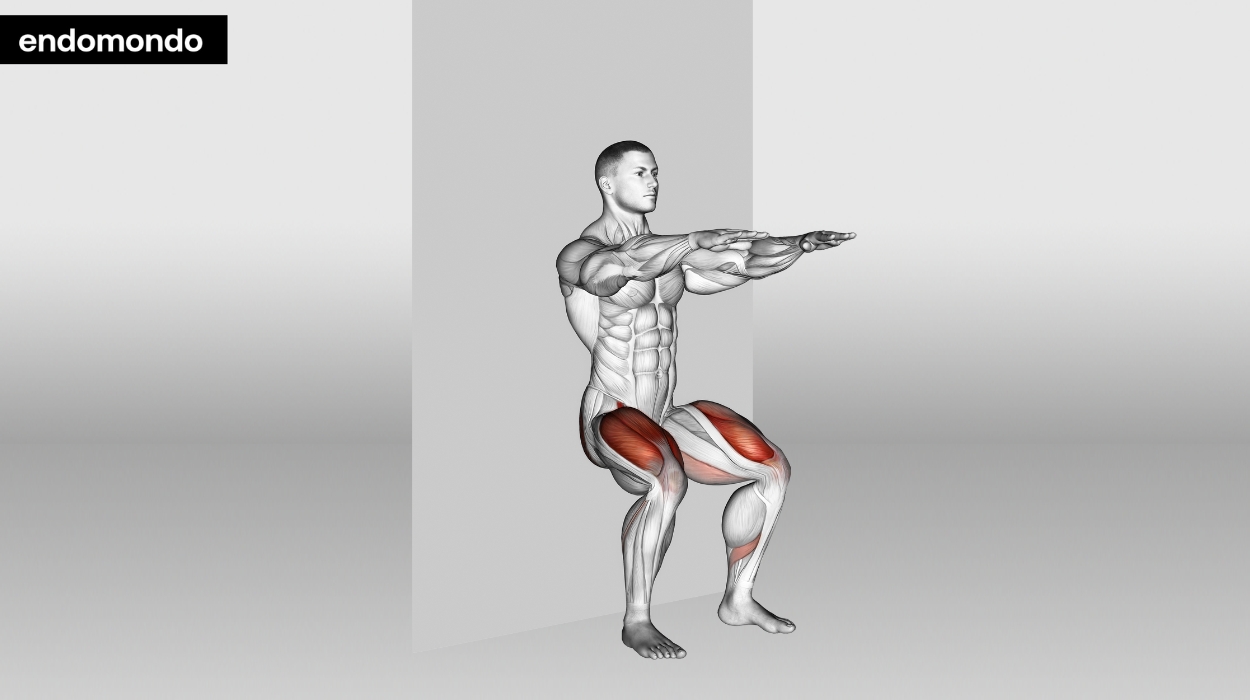
Interval Wall Sits
You might only be able to hold a wall sit for 15 seconds when you begin. That’s OK. You can do intervals.
Start with three sets for as long as you can handle and build your reps and duration over time. You don’t have to do 15 straight minutes of this exercise. You’ll get just as many benefits of wall sits from doing 15 one-minute sets.
You can also sprinkle your sets throughout the day if you don’t have the time or will to do them all at once. Consecutive doesn’t equal better.
Hold Your Wall Sit In A Higher Position
When you start out with wall sits you might not have the strength to go all the way down to 90 degrees. Feel free to start out standing higher up on the wall with a 45-degree angle in your knees. You can adjust downwards as you build more and more strength.
Move Your Feet Further Away From The Wall
Keeping your feet further out in front of you can make your wall sit a little easier. You will still work your leg muscles and abdominals while adjusting the exercise to meet where you are in your physical journey. In time, you will be able to bring your feet a little closer to intensify the burn.
How To Advance Your Wall Sit?
Without Equipment
Increase Holding Time
The longer you can hold your wall sit, the higher your heart rate will be and the more muscle-strengthening benefits you’ll receive.
Toes Up
You can lift your toes while maintaining excellent wall sit form to increase the burn to your calf muscles and improve flexibility in your ankles.
Decrease The Angle
The lower you go, the more challenging the exercise is. However, to protect your knees don’t ever go below 90 degrees.
Single Leg Chair
Amp it up by lifting one leg in front of you while performing a wall sit. Be sure to keep your hips even. Switch legs regularly to ensure even use on both legs This one-legged exercise increases the load on your standing hip flexors and quads and greatly intensifies your workout.
If this variation is a bit too much for you, you can cross one leg over your standing leg as if you’re sitting in a chair instead of holding it straight in front of you.
Single-Leg Dynamic Chair
If you’re ready for even more work, you can move your raised leg from side to side, creating extra work for your abductors and adductors, while holding your stance. You can also make small circles in both directions to really challenge your muscles.
With Equipment
- Resistance Bands: Put a resistance band around your knees to work your abductors and abdominals.
- Wall Sit With Weight: Hold a weight to increase your heart rate and calorie burn.
- Wall Sit With A Ball: Hold a ball between your knees to give your adductors some extra stimulation.
- Wall Sit With Stability Ball: Use a stability ball to work your muscles from many angles and improve your squat technique.
- Wall Sit With Upper Body Exercises: Increase calorie burn and multi-task by incorporating bicep curls, shoulder presses, and lateral raises with free weights while doing your wall sits.
How To Work Out Safely And Avoid Injury?
Be mindful of your form and adjust your knee, hip, and ankle angles if you experience any joint discomfort. Never go more than 90 degrees, and keep your core tight and your back flat against the wall throughout the exercise.
Conclusion
Wall sits are an excellent, joint-friendly functional movement exercise that improves strength, joint stability, and flexibility. With consistent practice, it’s feasible that chronic knee pain from ailments such as arthritis and a runner’s knee can be improved.
this wonderful isometric exercise can improve your performance in the gym, in sports, and in life with minimal time commitment. If you can muster the willpower to wall sit for a few minutes a day, you can reap the many benefits of wall sits.
Frequently Asked Questions
This varies from individual to individual. Some people can hold wall sits for 15 minutes, others for 15 seconds. Do what you can, and you will still receive benefits from the exercise.
Most likely, yes. Ask your doctor if it’s an appropriate exercise for you, but wall sits can help improve knee pain over time.
This depends on the individual. If having strong abs, strong legs, a stable lower back, and stable knees are important to you, then yes, the short-lived discomfort of wall sits is probably worth it.
Resources
- Wiles, J.D., Allum, S.R., Coleman, D.A. and Swaine, I.L. (2008). The relationships between exercise intensity, heart rate, and blood pressure during an incremental isometric exercise test. Journal of Sports Sciences, [online] 26(2), pp.155–162. doi:10.1080/02640410701370655.
- Rickson, J.J., Maris, S.A. and Headley, S.A.E. (2021). Isometric Exercise Training: A Review of Hypothesized Mechanisms and Protocol Application in Persons with Hypertension. International journal of exercise science, [online] 14(2), pp.1261–1276. Available at: https://www.ncbi.nlm.nih.gov/pmc/articles/PMC8758172/
- Cho, M. (2013). The Effects of Modified Wall Squat Exercises on Average Adults’ Deep Abdominal Muscle Thickness and Lumbar Stability. Journal of Physical Therapy Science, [online] 25(6), pp.689–692. doi:10.1589/jpts.25.689.




